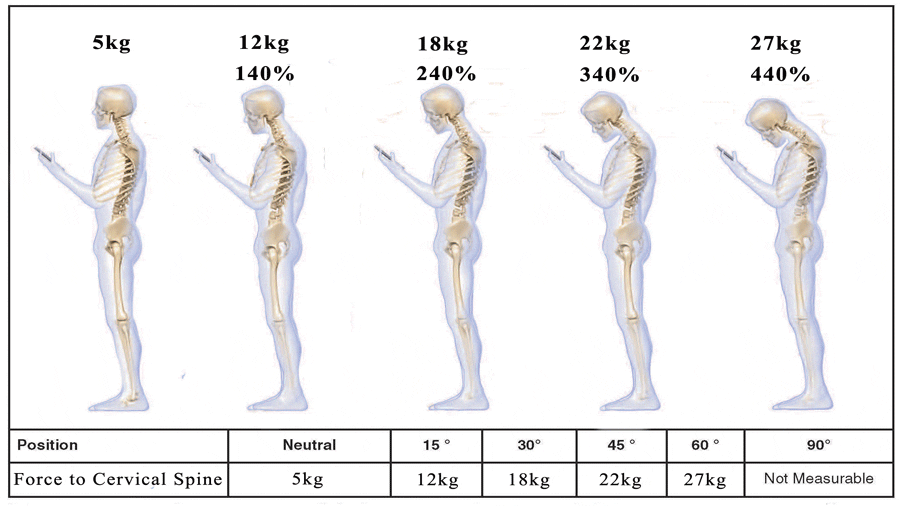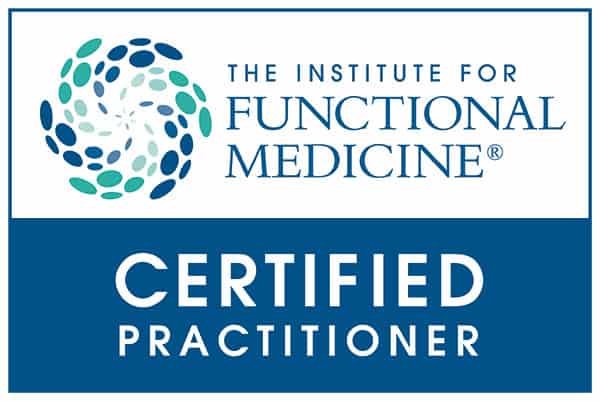
by Dr Alex Jimenez DC, APRN, FNP-BC, CFMP, IFMCP | Health, Nutrition, Wellness
It�s spring and many people will be heading back to the gym in the hope of busting cellulite, a seemingly unshakeable curse for many women. However, cellulite, which has both genetic and hormonal causes, can be improved with a comprehensive long-term strategy. Here are a few facts and fictions about the dreaded �orange-peel effect� before you get started.
Exercise Gets Rid Of Cellulite
FALSE. Unfortunately, exercise alone isn�t enough to shift those lumpy fatty deposits anchored deeply under the skin. This type of fat corresponds to metabolized fat from food and genetic fat stores often found around the buttocks and thighs. However, exercise (walking, running, water biking, skipping) forms part of an overall cellulite-busting strategy, giving a real boost to venous and lymphatic circulation.
Slim women have cellulite too! Losing weight by forcing yourself to follow a drastic and highly restrictive diet won�t solve the problem. (Shutterstock)
Hormonal Balance Affects Cellulite
TRUE. Harmonizing your hormonal balance could help reduce and halt the further development of adipocyte fat cells. A lack of progesterone can often create a cellulite effect. Borage oil and chaste tree are herbal remedies that are recommended for boosting the hormone progesterone. Changing to a contraceptive pill with a different dose of hormones can also be an option. Ask your health care provider for more information.
Cutting Calories Is The Only Way To Get Rid Of Cellulite
FALSE. Slim women have cellulite too! Losing weight by forcing yourself to follow a drastic and highly restrictive diet won�t solve the problem. In fact, it can prove counterproductive, since you also risk losing muscle mass and accentuating any cellulite buildup.

A Mediterranean diet based on foods rich in antioxidants (fruit and vegetables, seeds, nuts, wholegrain cereals) is the best weapon of mass destruction in the fight against lumpy deposits. (Shutterstock)
The Mediterranean Diet Is The Most Effective
TRUE. Cellulite, by definition, is an inflammatory condition. A Mediterranean diet based on foods rich in antioxidants (fruit and vegetables, seeds, nuts, wholegrain cereals) is the best weapon of mass destruction in the fight against lumpy deposits. Foods containing fast-acting sugars, with high glycemic indexes, should generally be avoided because they promote the storage of fat and cause insulin levels to spike. Watch out for hidden salt too, which is often responsible for water retention. Avoid soup in the evening and fill up on protein.
Herbal Remedies Can Help Tackle Cellulite
TRUE. The key active ingredients in certain plants can help the body to eliminate toxins, flushing out tissue that�s full of water and fat. These include dandelion, birch, fennel, artichoke, black radish, fumaria, red vine leaf, witch hazel and ginkgo biloba, which can help boost blood flow back to the heart and aid the lymphatic system. Drinking lots of water will also stimulate digestive transit to help get rid of inflammatory toxins.

Call Today!
Follow @htlifeandstyle for more.

by Dr Alex Jimenez DC, APRN, FNP-BC, CFMP, IFMCP | Arthritis, Fitness, Wellness
“Oh, my aching back!” I can’t tell you how many of my students have back issues. And it’s no wonder, considering most of us spend our days tied to our desk chairs and parked in the same position in front of our screens hour after hour. The problem: Sitting for prolonged periods can cause or exacerbate back issues. When we’re stuck in this position, our hip flexors shorten in front and pull on our lower back. Not to mention, constant slouching can lead, over time, to compressed disks. That’s why it’s crucial to stretch your back every day. Here, four moves you can do right in your office.
RELATED: How Chair Yoga Can Help Your Arthritis
1. Backbend Arch
Start seated at edge of chair, placing hands behind you with fingers facing away from hips. Prop yourself up on fingertips, drawing sacrum in and up to lift lower back. Follow backbend all the way up chest to shoulder blades and open up entire front body. Hold and breathe for 8 to 10 breaths, then release.

2. Cat/Cow
Sit at edge of chair with feet flat on the floor. Place hands on knees and inhale, lifting chest and sticking hips out behind you. Lift gaze, open chest, and gently squeeze shoulder blades together (A). On an exhale, round chest, scoop in belly, and curl tailbone under as you drop head toward sternum (B). Repeat for a series of 10 cycles.
RELATED: 10 Yoga Poses to Do at Your Desk

3. Lower-Back Circles
Sit with feet hip-width apart and hands resting on knees (A). Inhale, then begin circling torso clockwise, making sure to initiate movement from base of spine (B). Complete 8 to 10 rotations. Stop and then repeat the motion, this time circling in a counterclockwise direction. Continue alternating for 2 to 3 minutes.

4. Roll-Downs
Sit with feet hip-width apart and hands hanging at sides (A). From head, start rounding down through spine (B). Exhale, letting forehead release forward and the weight of your head bring you over until top of head is by thighs (C). Inhale; slowly start stacking vertebrae as you round up to sit. Draw belly button to spine to protect back, and feel the articulation as you round up. Continue rolling down and up for 5 to 8 cycles.
Pin this entire workout for later:

Adapted from Chair Yoga: Sit, Stretch, and Strengthen Your Way to a Happier, Healthier You by Kristin McGee ($19; amazon.com). Copyright 2017 by Kristin McGee. Reprinted by permission of William Morrow, an imprint of HarperCollins Publishers.

by Dr Alex Jimenez DC, APRN, FNP-BC, CFMP, IFMCP | UTEP (Local) RSS
Related Articles
UTEP Volleyball�s head coach Holly Watts announced the addition of Abby Adams for the 2017-18 campaign on Tuesday.
�I chose UTEP because of the competitive Biology academic program, and the Pre-Dentistry curriculum,� Adams said. �I am excited about all the courses they have to offer. UTEP is a beautiful campus, and a university full of tradition. I am looking forward to being a part of the University of Texas at El Paso and the volleyball program.�
Adams is 5�8 from Valor Christian High School in Highlands Ranch, Colo., where she played at the defensive specialist position for three years.� During her time with the Eagles, Adams took the court in 157 sets as the starting libero while tallying 440 digs at 2.8 digs per set, 56 assists, 19 service aces and 14 kills.
The Valor Christian squad wrapped up the 2016 season by finishing in the Final Four of the 4A State Volleyball Tournament for the second time in school history. Adams finished her senior campaign earning accolades for her work in the classroom and on the court.
Her awards included being named to the�2016 CHSAA 4A First-Team All-League, CHSAA All-State First-Team All-Academic, CHSAA All-State Honorable Mention and 4A Honorable Mention All-Academic.
�We are excited to add Abby to our roster for the 2017 season,� Watts said. �Abby comes in with her experience as a defensive player and specifically libero, she will bring additional ball control and experience at a high level to our�gym.
�We are thrilled she has decided to come to UTEP and bring her back-row prowess with her. She is playing again this club season with a quality club and great coaches and she will continue to gain experience even before her arrival.�
Aside from high school volleyball, Adams played club volleyball since the age of nine. She plays for Colorado Juniors 18 Jess, who will play in the 18 Patriot Division of the 2017 Girls��Junior�National�Championships (GJNC) in Minneapolis this summer.

by Dr Alex Jimenez DC, APRN, FNP-BC, CFMP, IFMCP | Chiropractic
On the left: regular green tea. On the right: microwave boosted. Not that you can tell from the picture.
It�s been a rough news week, and it�s only Wednesday. Fortunately, though, today�s raging controversy is about tea. Is it okay to microwave it? Is it better to microwave it? Australian research says yes, while tea aficionados worldwide recoil in horror.
�The claim,
broadcast on ABC Radio Sydney, is that you can extract slightly more antioxidants (specifically
catechins) if you pop the tea in the microwave while it�s steeping. Quan Vuong and his team at the University of Newcastle in Australia have been comparing different ways of steeping green tea, and in a
2012 paper they describe a method that gets you more of the good stuff than your typical method, but is still practical to do at home. The news article gets the procedure a little mixed up, but here is what the scientific paper describes:
- Boil water, and pour it over your tea bag. Steep at least 30 seconds.
- Put the cup (with teabag) into the microwave for one minute at half power, or whatever power setting will get you 500 watts.
- When you remove the tea bag, dunk it up and down ten times and then squeeze it out.
The idea is to help people get the health benefits of green tea, without having to guzzle five or more cups a day. Regular brewing can extract 62 percent of the tea leaves� catechins and 76 percent of the caffeine. The microwave boost gets you up to 80 and 92 percent. That�s not a huge difference, but hey, it�s something.
So how does it taste? I brewed two cups of plain green tea, letting one steep for three minutes and doing the microwave protocol, which took about three minutes anyway. I dunked and squeezed both tea bags as I removed them.
They tasted almost identical, although I could detect a little more of a bitter and astringent taste in the one that had been microwaved. Vuong and crew write in their paper that tea brewed this way can be a little stronger, so you may want to use a flavored green tea instead of a plain one, to cover up any tastes you don�t like.
One problem: I don�t love green tea. And a lot of the British outlets reporting on this study are probably with me on that. Black tea is probably what they�re thinking of. So I brewed some more tea for science, this time a mango-chili flavored black tea. Again, they were similar but the microwaved tea was slightly more bitter and astringent. It also had more of the chili flavoring, which was nice.
If you are fussy about how you prepare your black tea, you probably know that steeping it too long can make it bitter. Flavor-wise, this technique is just a quicker way to steep it too long. That said, it�s not bad. If you�re already the kind of person who steeps a teabag for more than five minutes, or who might even use the same teabag more than once (which my favorite fancy caf� actually recommends, so spare me the �how dare you�), you�ll like this just fine.

by Dr Alex Jimenez DC, APRN, FNP-BC, CFMP, IFMCP | UTEP (Local) RSS
Related Articles
The UTEP football team will conclude spring drills on Friday at 6 p.m. with the annual Spring Game in the Sun Bowl.
Gates will be open to the public starting at 5 p.m. and admission is free. Parking will be available north of P-9 and outside parking lots. Consessions will be open to fans along, with food trucks in the concourse. The first 300 students will receive a free tank top.
Fans will get to see a variety of different lineup combinations, a live scrimmage and simulated game situations. Special in-game videos will pit the players against the coaches in a variety of grueling activities.
After the game, the seniors and head coach Sean Kugler will sign free complimentary spring game posters. There will also be a free football clinic for youth 13 and under.
Roster Rundown
UTEP returns 44 lettermen (21 offensive, 21 defensive and two special teams) from the 2016 team. The Miners have 14 starters (five offensive, seven defensive and two special teams) coming back. The offensive line will once again be counted on to provide stability with three starters returning from last season, including All-American Will Hernandez.
On defense, the linebacker core returns three starters (Alvin Jones, Dante Lovilotte and Jayson VanHook). Jones and Lovilotte rated first and second on the team in tackles last season. They combined for 182 tackles and 12.5 tackles for loss. UTEP will also have 22 newcomers in the mix, with 17 coming out of high school, three junior-college transfers and two division I transfers.
Depth Cart Breakdown
The Miners� two-deep roster has a distinct El Paso flavor to it, with 12 projected starters (five offense, five special teams and two defense) hailing from the Sun City. There are also five immediate back-ups (four offense, one special teams) currently featuring El Pasoans. In terms of experience upperclassmen are expected to account for 18 (nine offense, seven defense and two special teams) of the 27 positions listed on the depth chart.
Protecting the Field
The offensive line for the Miners brings experience to the depth chart this season. The unit lost two starters from last season but return Will Hernandez, Tanner Stallings and Derron Gatewood. Leading the way for the squad will be Hernandez, who in 2016 became the first UTEP offensive lineman to garner All-American honors.
The senior has started every game (37) at the left guard position during his three years with the Miners. The Miners also return three linemen that have starting experience.
Adding depth will be 2016 All-Conference USA freshman team recipient Greg Long. Long started a game at right guard before starting three at left tackle. At the opposite side of the line, junior Jerrod Brooks started the first half of the 2016 campaign at right tackle. Also returning for the unit will be Derek Elmendorff. The senior has combined for 19 starts at right guard and will look to contribute this season.
All-American Status
Offensive lineman Will Hernandez has started every game in his three years with the Miners. Last season, Hernandez was the first offensive lineman at the school to receive AP All-American second team and FOX Sports� All-American honors. The senior was also first offensive lineman since 2009 to earn All-Conference USA first team recognition. Hernandez�s national recognition didn�t stop there, garnering Pro Football Focus Pass Protector of the Year. The Miners capped season off with two showings of more than 500 yards of total offense, including a season-best 384 yards rushing in victory over North Texas.
Amazin� Metz
Ryan Metz played in 11 games, starting seven during the 2016 season. Metz completed 64.7 percent of his passes, the second-best completion percentage during a single season in program history. Metz tossed 14 touchdowns, the most passing scores by a Miner since 2010. Metz also led the squad with 1,375 yards on 130-of-201 passing and only four interceptions.
In fact, the El Paso native increased his touchdown passes from 2015 (six touchdowns) and decreased his interceptions from the season prior (seven interceptions). Metz�s 141.14 passing efficiency was the program�s fifth best single-season performance, while it ranked sixth in Conference USA. Metz produced big numbers during a 5OT win at UTSA.
Metz tied his career high with three touchdown strikes against the Roadrunners and threw for 211 yards on 15-of-23 passing. Metz was named one of eight Manning Award Stars of the Week following his performance in San Antonio. Metz produced two more solid outings in front of his hometown fans, throwing three more touchdowns against Houston Baptist and registering two passing scores, including a career-long 72-yard toss against North Texas. Metz also showed fancy feet, as he tallied a career-long 42-yard dash against the Mean Green.
Alvin�s Impact
Alvin Jones is returning for his senior season in 2017 at the linebacker position. In 2016, Jones played in 10 contests, making eight starts and missing two games due to injury. The El Paso native earned All-Conference USA second team honors after leading the team in tackles 93 (44 solo) and ranking tied 11th in C-USA in total tackles. Jones also led team with 72 tackles on rushing plays and ranked fourth in C-USA in tackles per game (9.3).
The Burges High School graduate added 6.0 tackles for loss (28 yards), 2.5 sacks (22 yards) and a pass breakup. Jones has 241 career tackles (seventh most at UTEP since the 2000 season), 10.5 career sacks (needs 1.5 to crack the program�s all-time top 10 list), 29.5 career tackles for loss (needs 1.0 to etch name on all-time top 10 list). Jones opened his junior campaign with a 12-tackle performance, including, a tackle for loss, during a victory against rival NM State. Jones brought his best to the table when he established a caree best with 16 tackles (seven solo) against FIU.
The total tackles against the Panthers were the most by an individual UTEP player since the 2013 season (17 tackles). Five weeks later, Jones amassed 16 more tackles (11 solo) at Rice, while chipping in with a sack against the Owls. His junior season was capped with another 12-tackle outing, while registering a sack and 1.5 tackles for loss during a dominant victory against North Texas.
Making the Change
UTEP head coach Sean Kugler brought in four transfer players to make immediate impacts in 2017. Tight ends David Lucero and Josh Weeks, and a pair of defensive players, LB Kalaii Griffin and DB Kahani Smith, will don the Orange and Blue in 2017. After Hayden Plinke graduated, Lucero and Weeks will look to fill the tight end gap. Lucero, who is 6�5 and 230 pounds, saw action in all 12 games at Arizona Western College, catching nine passes for 91 yards and a score in 2016.
Weeks, who also possessees great physical attributes (6�4, 255 pounds), played in two games at BYU (three rec., 23 yards) in 2015. Griffin registered 40 tackles (30 solo) in nine games played at Ventura Community College in 2016. Smith was a playmaker at Riverside Community College, seeing action in 11 games at the strong safety position. Smith notched 36 tackles, four interceptions, 11 pass breakups and three touchdowns (a pick-six and two scoop-and-scores).
Bowl Mania
UTEP will face eight opponents in 2017 who made a bowl game in 2016. The Miners will open with Oklahoma (Sugar Bowl) on Sept. 2in Norman,Okla. After UTEP�s contest at NM State on Sept. 23, the next seven opponents are Army (Heart of Dallas Bowl), WKU (Boca Raton Bowl), Southern Miss (New Orleans Bowl), UTSA (New Mexico Bowl), Middle Tennessee (Hawai�i Bowl), North Texas (Heart of Dallas Bowl) and LA Tech (Armed Forces Bowl). Syracuse and Duke lead the list with 11 bowl opponents each, while South Florida will see 10. Florida and Tulsa will face nine bowl opponents, and East Carolina will take on eight in 2017.

by Dr Alex Jimenez DC, APRN, FNP-BC, CFMP, IFMCP | Alzheimer's, Exercise, Fitness
(HealthDay News) — Healthy aging of the brain relies on the health of your heart and blood vessels when you’re younger, a new study reports.
People with risk factors for heart disease and stroke in middle age are more likely to have elevated levels of amyloid, a sticky protein known to clump together and form plaques in the brains of people with Alzheimer’s disease, the researchers said.
Amyloid In The Brain
MRI scans revealed larger deposits of amyloid in the brains of seniors who smoked, had high blood pressure, were obese, diabetic or had elevated cholesterol levels when they were middle-aged, said lead researcher Dr. Rebecca Gottesman. She’s an assistant professor of neurology at the Johns Hopkins University School of Medicine in Baltimore.
All of these risk factors can affect the health of a person’s blood vessels, otherwise known as vascular health, leading to hardening of the arteries and other disorders.
“Amyloid is what we think, by leading hypotheses, accumulates to cause Alzheimer’s disease. So this suggests that vascular risk in middle age may play a direct role in the development of Alzheimer’s disease,” Gottesman said.
Two or more risk factors nearly tripled a person’s risk of large amyloid deposits. One risk factor alone increased the likelihood of amyloid deposits by 88 percent, the study found.
Obesity
Obesity in particular stood out as a strong risk factor, on its own doubling a person’s risk of elevated amyloid later in life, said Steven Austad, chair of biology of aging and the evolution of life histories at the University of Alabama, Birmingham.
“In terms of one risk factor by itself, that turned out to be the most important one, which is interesting,” Austad said. “Twenty years ago obesity was not the problem that it is now, suggesting that 20 years from now things might be considerably worse.”
Gottesman and her colleagues examined data from nearly 350 people whose heart health has been tracked since 1987 as part of an ongoing study. The average age of the study participants was 52 at the start of the study. Sixty percent were women, and 43 percent were black. The average follow-up time was almost 24 years.
When the participants entered the study, none of them had dementia. About two decades later, they were asked to come back and undergo brain scans to check for signs of amyloid.
The researchers discovered a link between heart risk factors and brain amyloid. The relationship did not vary based either on race or known genetic risk factors for Alzheimer’s.
Poor Blood Vessel Upkeep
Heart risk factors that cropped up late in life were not associated with brain amyloid deposits. What a person does in their middle age is what apparently contributes to their later risk of elevated amyloid, not what happens later, Gottesman said.
The study did not prove a cause-and-effect relationship, but there are several theories why the health of a person’s blood vessels might be linked to Alzheimer’s.
Blood and spinal fluid contain amyloid, and some think that unhealthy blood vessels might allow amyloid to leak out of the bloodstream and into brain tissue, said Austad, a spokesman for the American Federation for Aging Research.
“The idea that the first injury to the brain is really an injury to the blood vessels of the brain has been around for a while, and this would support that, generally,” Austad said. “The amyloid plaques, you’re not seeing them inside the vessels. You’re seeing them outside the vessels, in the brain.”
Blood vessels also play a role in flushing out broken-down amyloid particles that naturally occur in a person’s brain, said Keith Fargo, director of scientific programs and outreach for the Alzheimer’s Association.
“You can imagine if there’s something wrong with your brain’s circulation, it could affect the clearance of this amyloid in some way,” Fargo said.
Hardened arteries also can lead to strokes or mini-strokes that affect the ability to think and remember in some people as they age, which contributes to dementia and Alzheimer’s, Gottesman said.
Based on these findings, people who want to protect their brain health should protect their heart health, and the sooner the better, Fargo said.
“You don’t want to wait until your 60s to start taking care of yourself. It has to be a lifetime commitment,” Fargo said.
The findings were published April 11 in the Journal of the American Medical Association.
SOURCES: Rebecca Gottesman, M.D., Ph.D., assistant professor of neurology, Johns Hopkins University School of Medicine, Baltimore; Steven Austad, Ph.D., chair of biology of aging and the evolution of life histories, University of Alabama, Birmingham, and scientific director, American Federation for Aging Research; Keith Fargo, Ph.D., director of scientific programs and outreach, Alzheimer’s Association; April 11, 2017, Journal of the American Medical Association
News stories are written and provided by HealthDay and do not reflect federal policy, the views of MedlinePlus, the National Library of Medicine, the National Institutes of Health, or the U.S. Department of Health and Human Services.

by Dr Alex Jimenez DC, APRN, FNP-BC, CFMP, IFMCP | Natural Health, Veterans, Wellness
Hundreds of thousands of veterans of the Persian Gulf War returned home with puzzling health issues that doctors couldn’t explain. Now, 25 years later, Gulf War Illness (GWI) continues to affect 25-32 percent of the 700,000 U.S. veterans who served in the 1990-1991 war.
The condition is characterized by symptoms such as chronic headache, cognitive difficulties, debilitating fatigue, widespread pain, respiratory problems, sleep problems, gastrointestinal problems, and other unexplained medical abnormalities.
Twenty years of scientific research has traced these symptoms to Gulf War chemical exposures and the drugs taken during deployment that were meant to prevent or counteract these exposures. However, the vast majority of these studies have focused on neurological effects, but none have fully explained the body’s pathways GWI uses to affect the brain.
Now, a study from the University of South Carolina has found a gastrointestinal link that could not only help explain the health issues facing veterans, but may also point to new treatment options.
Researchers found that the chemicals, etc. that veterans were exposed to altered the microbiome — the bacteria that inhabit the gut. The affected microbiota then produce endotoxins, which pass through a thinned lining of the gut (called a leaky gut) and into the blood where they circulate throughout the body.
These compounds trigger an inflammatory response that, in turn, initiates several neurological abnormalities commonly observed in GWI.
“Humans and animals have specific types of bacteria that help aid various physiological processes, including digestion, absorption, immunity and gut integrity, and when external factors change the bacterial composition in our digestive systems, we have problems,” says researcher Saurabh Chatterjee. “Obesity, metabolic syndrome, inflammatory bowel syndrome, and liver disease have already been linked with changes in bacterial composition of the gut.”
The study showed that not only did exposures to the suspected causes of GWI lead to inflammation in the intestines, they also lead to inflammation in the brain.
“Usually, the gut is very selective about letting only certain elements from what we eat and drink into our blood — thanks to good bacteria,” Chatterjee explained. “But when the composition changes due to an increase in certain bad bacteria, this causes disruption to the mucosal lining of the intestinal walls — leading more intestinal contents to leak into the blood.”
Once in the blood, the toxins travel throughout the body and affect different organs, including the brain. Once in the brain, the toxins cause the inflammation and neurological symptoms that previous studies have extensively linked to GWI.
“We know that many diseases like obesity, liver disease, and inflammatory bowel syndrome can be cured or at least decreased by consuming good bacteria, like probiotics,” Chatterjee said. “Now that this connection has been established, it opens the door to new studies where GWI patients take probiotics for a longer period of time and, hopefully, see improvement in symptoms connected with metabolic syndrome, gastrointestinal disturbances, and maybe even neuroinflammation.”
Recent studies have indicated that gut bacteria have an impact on a wide range of health issues. UCLA researchers found that mice fed beneficial bacteria produced microbes known to prevent cancer. Researchers suggested ingesting probiotics like yogurt or probiotic supplements could help prevent cancer from developing.

by Dr Alex Jimenez DC, APRN, FNP-BC, CFMP, IFMCP | Natural Health, Wellness
Surgery is a common approach to treat carpal tunnel syndrome. But, physical therapy may work just as well, a new study indicates.
Researchers found that physical therapy — particularly so-called manual therapy — improved hand and wrist function and reduced pain as effectively as a standard operation for the condition.
Moreover, after one month, physical therapy patients reported better results than those who underwent surgery.
“We believe that physical therapy should be the first therapeutic option for almost all patients with this condition,” said lead study author Cesar Fernandez de las Penas.
“If conservative treatment fails, then surgery would be the next option,” said de las Penas, a professor of physical therapy at King Juan Carlos University in Alcorcon, Spain.
Also, one extra benefit of therapy over surgery may be cost savings, he noted.
Carpal tunnel syndrome occurs when the median nerve, which runs from the forearm into the palm of the hand, becomes squeezed at the wrist. It often arises from repetitive motions required for work, such as computer use or assembly line work.
Symptoms usually start gradually, with patients noticing numbness and weakness in the hand and wrist.
Surgery for the condition generally involves cutting a ligament around the wrist to reduce pressure on the median nerve, according to the U.S. National Institutes of Health.
For this study, de las Penas and his colleagues followed 100 women from Madrid who had carpal tunnel syndrome. Half were treated with physical therapy and half underwent surgery.
For three weeks, the therapy patients received weekly half-hour manual therapy sessions — meaning therapists only used their hands. The therapists focused on the neck and the median nerve. They also applied manual physical therapy to the shoulder, elbow, forearm, wrist and fingers. On their own, patients performed neck-stretching exercises at home.
After one month, the therapy group reported greater daily function and greater “pinch strength” between the thumb and forefinger compared to the surgery patients. After three, six and 12 months, however, improvements were similar in both groups. All participants experienced similar reductions in pain.
Study co-author Joshua Cleland is a professor with the physical therapy program at Franklin Pierce University in Rindge, N.H. “Manual physical therapy may be just as beneficial in improving function and symptom severity as surgery despite the severity of their condition,” he said, noting that 38 percent of those in the therapy group had “severe” carpal tunnel syndrome.
“These manual physical therapy techniques are commonly used here in the United States as well and should become a standard of practice for physical therapists working with patients who have carpal tunnel syndrome,” Cleland said.
Dr. Daniel Polatsch is co-director of the New York Hand and Wrist Center at Lenox Hill Hospital in New York City. He treats several hundred cases of carpal tunnel syndrome each year, of which 15 to 20 percent require surgery.
Treatment should be decided on a case-by-case basis, Polatsch said. Mild cases may be treated with conservative approaches that can include splinting, injections, therapy and activity modification, he added.
“Surgery is necessary when there is muscle weakness or atrophy from the nerve being compressed at the wrist,” he said.
Polatsch added that this type of surgery is generally safe and effective.
Still, operations can have complications, said Cleland. He cited a previous research finding that “approximately 25 percent of individuals undergoing surgery for carpal tunnel syndrome experience treatment failure with half of those requiring an additional surgical procedure.”
According to the researchers, almost half of all work-related injuries are linked to carpal tunnel syndrome. And, more than one-third who undergo surgery for the condition are not back at work eight weeks later.
Because this was a small study focusing only on women, the study authors said that future studies need to examine men.
The study results were published in the March issue of the Journal of Orthopedic & Sports Physical Therapy.

by Dr Alex Jimenez DC, APRN, FNP-BC, CFMP, IFMCP | Chiropractic, Posture
You could do cartwheels down the centre of a bus or train in peak hour and no one would notice, thanks to our latest modern addiction that has us all continually looking down.
And apparently, because of this need to be glued to our smartphone screens, a new survey by the Chiropractors’ Association of Texas�suggests that it has created a brand new health disorder and, with no clear policy to help curb the issue, it threatens to put a strain on medical services.
According to Chiropractors, thousands across patients�are apparently lining up in droves out their doors complaining of chronic neck pain, headaches, poor posture and repetitive strain injuries in the wrist and hands � all blamed on the use of mobile technology.
Worryingly, according to their survey, 45 per cent of patients who visit chiropractic clinics on a weekly basis are teenagers. These bad habits are setting them up for a lifetime of complex back and neck issues.
President of El Paso Injury Medical Clinic points out, “These are patients who are constantly looking at their phone in a bent-forward position. Postural bad habits over time can develop into more serious health conditions such as spinal degenerative disease, osteoarthritis, hunchback and reduced mobility.”
But they aren�t the only ones suffering. The expectation from employers to be constantly contactable is also to blame. Dr Alex Jimenez, “It’s often the 25-45 age group I’m seeing now who have grown up using technology.
“I have one patient in his mid-40s who is experiencing onset of hand and arm pain and discomfort, he uses his mobile for work and regularly checks emails… Another patient who works in the finance industry experienced similar symptoms of chest and arm pain. Further investigation and x-rays revealed moderate degeneration of the lower cervical spine.”
Dr Jimenez hopes these findings will encourage policy makers to address the issue; “It’s estimated that by 2025, more than 5 billion people worldwide will be using smartphones. Already� 81% of smartphone users have their mobile phone switched on all of the time even when they are in bed or in bathrooms.
“We see smartphone addiction and text neck as a serious health risk and something that needs to be addressed.”
There is some advice you can follow to help avoid these issues:
1. Straighten your posture. Use a mirror to help align your neck and spine. The correct posture means your ear and shoulders should line-up.
2. Gentle exercises. If you struggle maintaining correct posture, do some exercises to help alleviate muscle stress and pain. Gently arch your neck and upper back backward, pulling your shoulders into alignment under your ears.
3. Look ahead. Instead of looking down, try raising your device to eye-level.

by Dr Alex Jimenez DC, APRN, FNP-BC, CFMP, IFMCP | Diets, Fitness
The types of cooking oils you eat may be sabotaging your health, making you lazy and setting you up to develop Type 2 diabetes, says a Canadian researcher.
Consuming high levels of polyunsaturated fatty acids (PUFAs) but not monounsaturated fatty acids (MUFAs), can make you lazy and fat, especially if you’re a woman, says Sanjoy Ghosh, a professor at the University of British Columbia’s Okanagan campus
For decades, heart disease was linked to saturated fats, which are found in meats and in full-fat products such as whole milk and butter. That belief caused the deliberate removal of saturated fatty acids from our diets, replacing them with MUFAs, found in avocado, nuts, seeds, and olives, and PUFAs, found in commonly used oils such as corn, sunflower, cottonseed, soybean, and canola. PUFAs are found in almost all convenience foods, including potato chips, cookies, cakes, and crackers.
Ghosh and his collaborator, UBC biologist and data analyst Jason Pither, examined data from 21 European countries. First, they studied pre-teen girls. Second, they examined the blood glucose levels of adult women. They also included other details such as the amount of time they spent watching television.
They concluded that there was a clear connection between the consumption of polyunsaturated fats and an increase in sedentary behavior, especially in the pre-teens, and an increase in diabetes among women.
“This data is extremely significant,” says Ghosh. “Nobody has made this connection and it’s time for an intervention. And if someone is beginning an exercise program without taking a close look at the fats, especially PUFA they are consuming, or changing what they’re eating, then it might be doomed to failure.”
The study was published in the Journal of Nutritional Biochemistry.
Recent studies have found that switching saturated fats for polyunsaturated fats didn’t lower the risk of heart disease — in fact, it may have raised it. A 2016 study examined the records of more than 9,400 people and found that while swapping saturated fats for vegetable fats like corn oil reduced cholesterol levels by 14 percent, it didn’t improve survival. In fact, those whose cholesterol was reduced the most had the highest risk of dying when compared to a control group that ate a diet high in saturated fats.



















